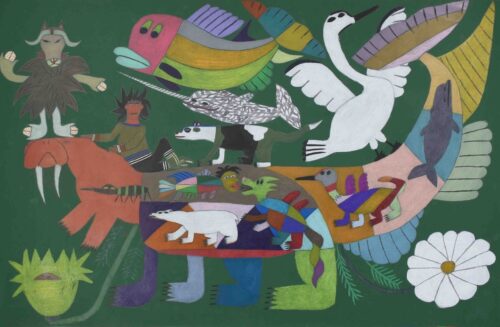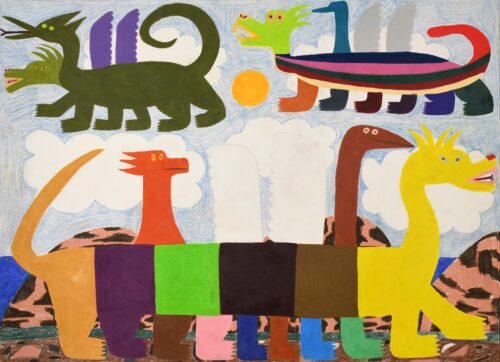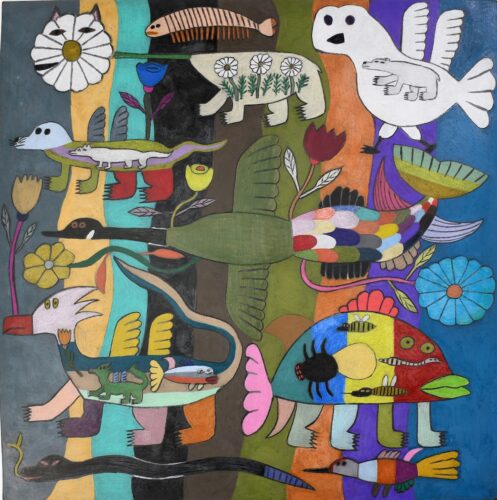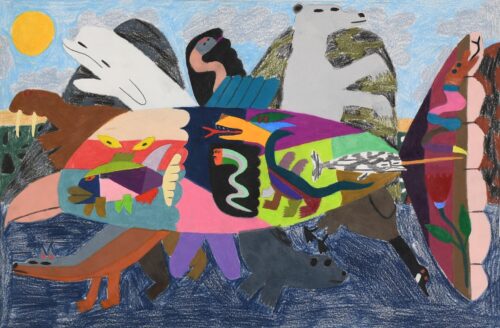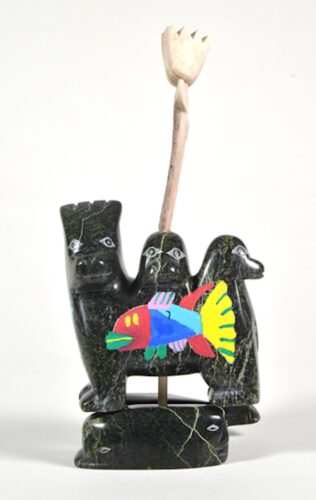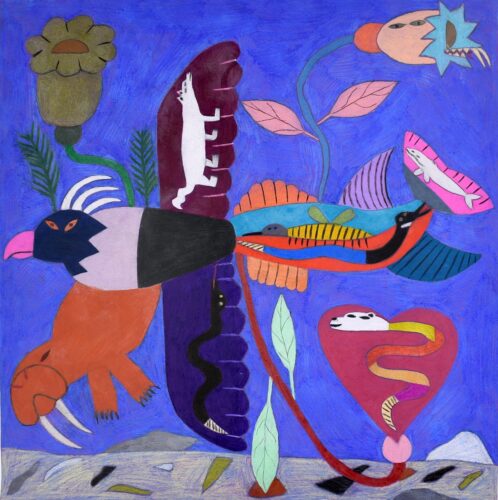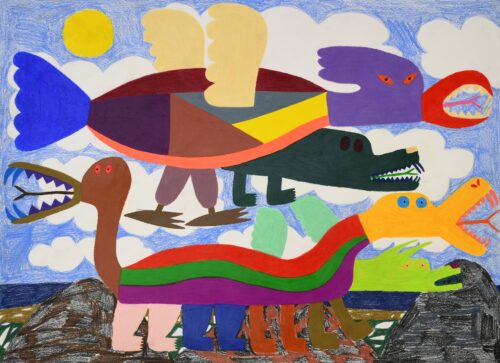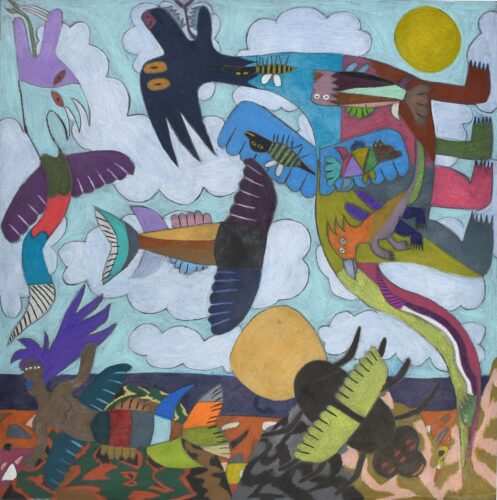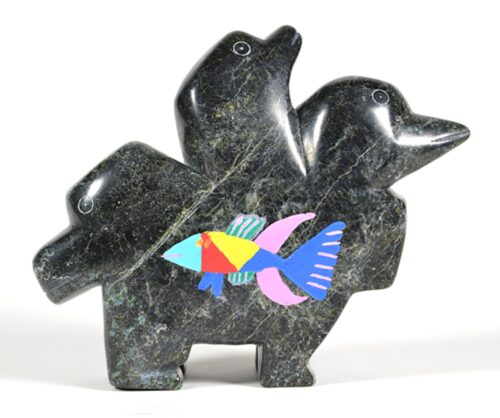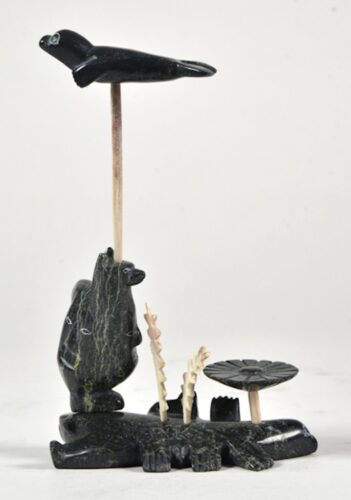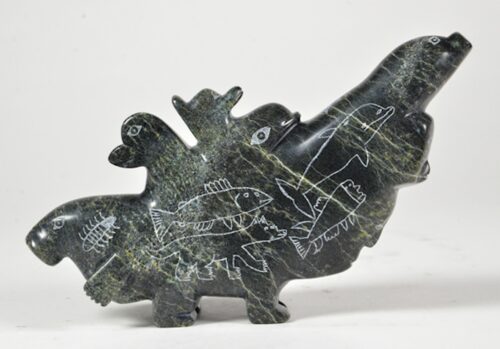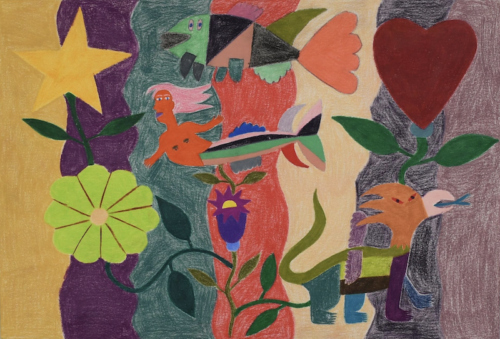Aged 38 and based in Kinngait, Nunavut, Pitseolak Qimirpik is at the forefront of a flourishing generation of young Inuit artists. Coming from a lineage of sculptors, he was trained in this art from a young age by his father, Kellypalik Qimirpik, working alongside him as an apprentice. At 13, he created his first sculptures and quickly distinguished himself with his unique style, earning recognition on the Canadian art scene. Fantastical, inventive, and infused with humor, his universe boldly merges Inuit traditions with symbols of North American popular culture.
During his childhood, Pitseolak Qimirpik led a partially nomadic life. Every spring and summer, he traveled across the land with his family, setting up temporary hunting and fishing camps. This intimate experience of the Arctic wilderness shaped his imagination and has had a lasting influence on his artistic practice.
Through his drawings, Qimirpik presents an enhanced vision of the northern landscapes of the Canadian tundra, which he illustrates with colored pencils in vibrant hues. His intricate compositions are populated by hybrid and fantastical creatures, sometimes grotesque, evolving amidst the vast expanses of the Far North and the icy waters of the Arctic. Inspired by Inuit mythology, these beings coexist with the local wildlife, including belugas, walruses, Arctic wolves, musk oxen, and polar bears. Without using traditional perspective techniques, Qimirpik structures his compositions through a dynamic layering of shapes and colors, arranging all elements on a single plane.
Most of his drawings and sculptures explore the concept of shamanic transformation, a spiritual belief that certain individuals can, when necessary, take on the form of an animal to gain its specific attributes and survive in the extreme conditions of the Arctic. Through his creations, Qimirpik reinterprets myths, stories, and legends passed down by elders, infusing them with contemporary energy. His playful and surprising sculptures, created through assemblage, depict human, mythological, and animal figures that are fused, intertwined, or superimposed. They illustrate a central principle of Inuit spirituality: the interconnectedness of all living things.
